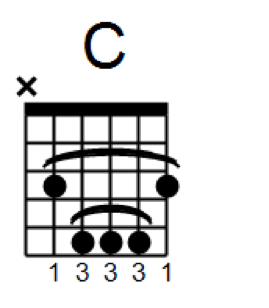Playing the open chords is only going to get you so far. As your skills develop you may find that it’s time to progress to learning barre chords.
What are barre chords?
With open chords, you typically play a combination of fretted notes and open strings, with each finger on your fretting hand holding only one string at a time. Barre chords are different in that one of your fingers will hold down multiple strings at a time.
The chord charts below show the two most common fingering patterns for barre chords:

In both shapes, the index finger of your fretting hand “barres” across the neck, holding down up to all six strings at a time. It looks easy, and it is — but if you’re new to it then it may take some time to play the fingerings correctly.
Tips for barre chord success
At first, getting your finger to hold down all of the strings can be difficult. Make sure to hold your thumb firmly on the back of the neck. That will give you good leverage and keep your hand stable, and it will make it easier to press down.
It’s important to make sure that all of the strings ring out as they should. It’s very easy to not apply enough finger pressure, and that will lead to muffled notes that will not ring out clearly. We recommend getting your fingers in the right spot then playing each note, one at a time. That way you can tell which notes aren’t being fretted properly and you can adjust your grip from there.
Moving on
One huge benefit of learning barre chords is that they are “movable”. That means that the same fingering pattern will give you a completely different chord simply by moving up or down the neck.
For example, check out these chord charts:
Eb and F# are two chords that are pretty much impossible to play with any open chord fingerings. But do you see the similarities in the fingerings with the two C chord shapes we looked at? They are exactly the same!
The first C chord shape is the same as the Eb, but it’s played at the 6th fret instead of the 3rd fret. The same goes for the F# chord – the fingering is just like the C chord played at the 8th fret, but it’s played at the 2nd fret instead.
That’s a big deal — once you are familiar with barre chords you can play in every key!
Wrapping it up
Being able to correctly play barre chords will take your playing past the beginner levels and get you deeper into all that playing guitar has to offer. And it doesn’t matter what style of music you like – you’ll find them in just about every genre. Don’t get discouraged, though! Practice makes perfect. The time you take to learn barre chords will be well spent, as they will open up a new world of possibilities to your playing.